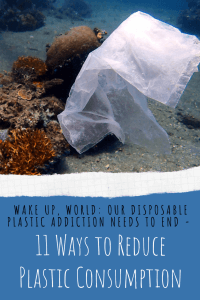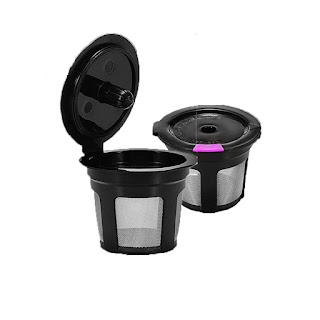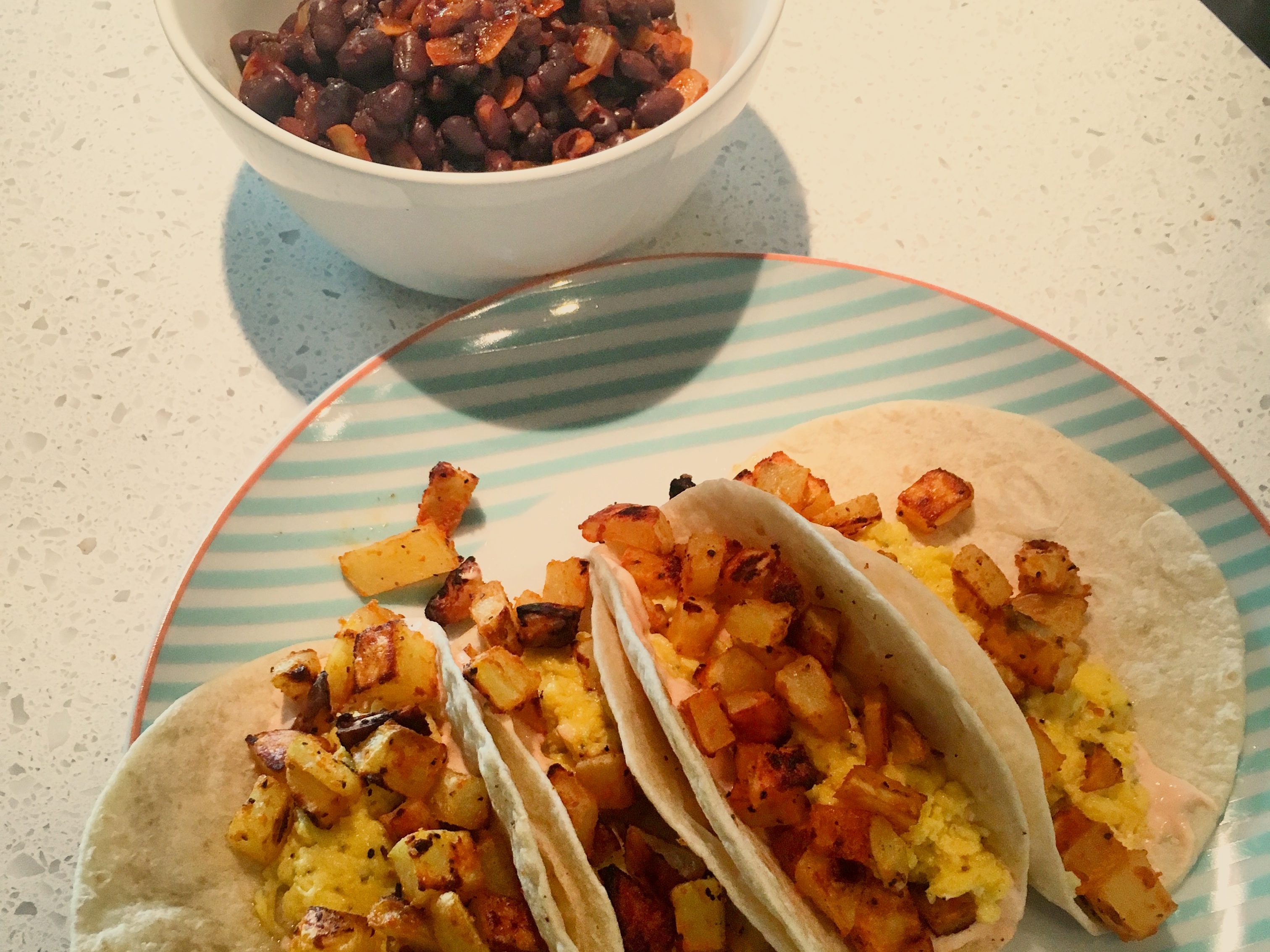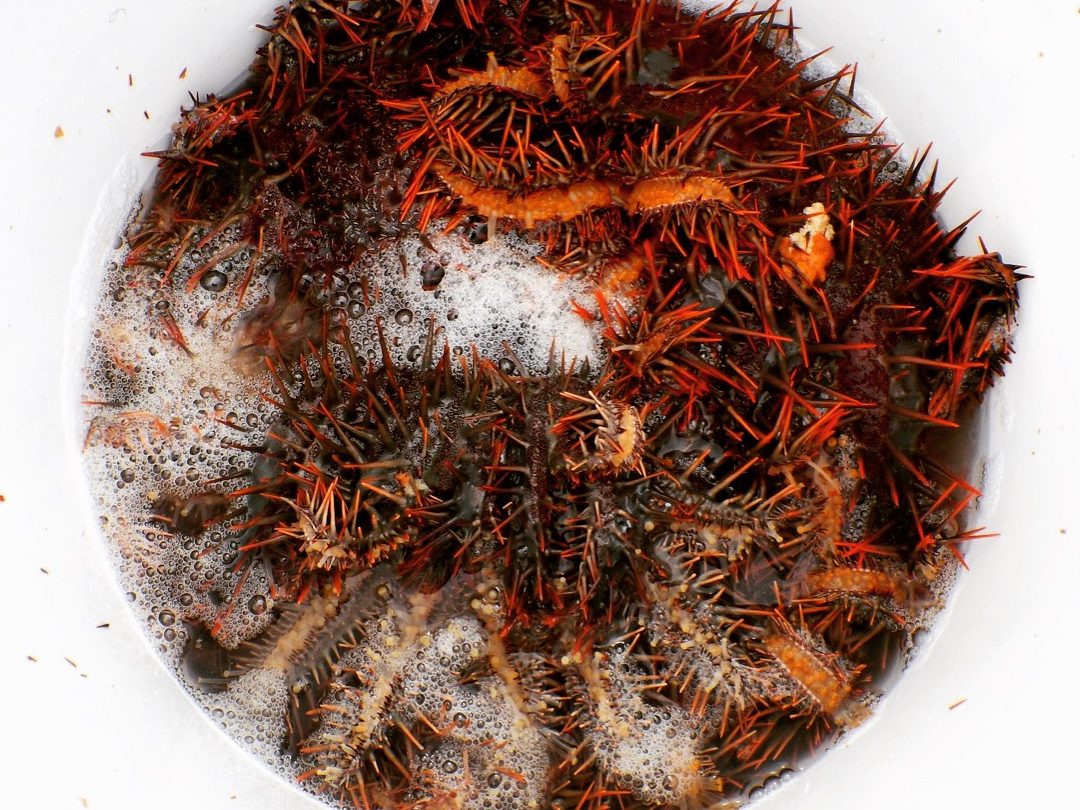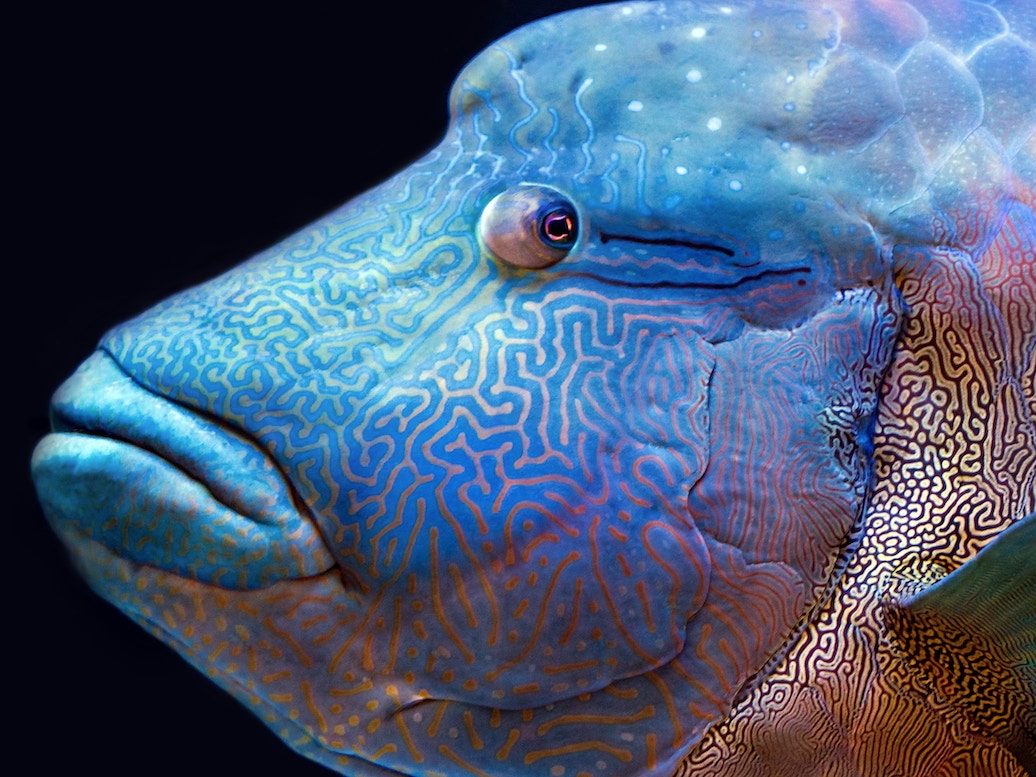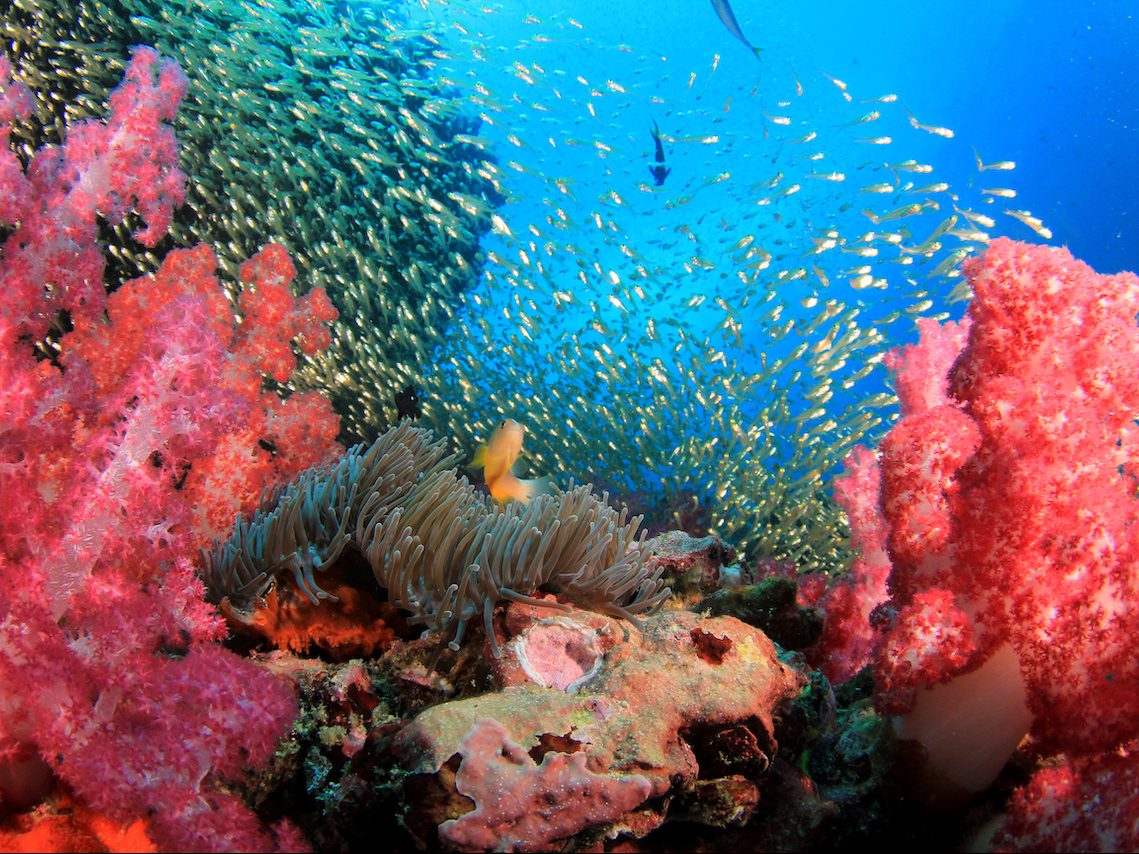Wake Up, World: Our Disposable Plastic Addiction Needs to End – 11 Ways to Reduce Plastic Consumption
I hope you all enjoyed the photos and stories of all the amazing little critters we discovered in Indonesia. In honor of World Oceans Day, I just wanted to throw out a little public service announcement to please stop trashing our oceans and to start noticing how much plastic we dispose of on a daily basis.
As a culture, we have become way too comfortable with all things disposable, but guess what, just because we get to dispose of trash items we no longer want in our presence, doesn’t mean they just go away. Out of sight, out of mind as the old saying goes. Not for our planet though. It takes plastics 500-1000 years to decompose. Now remember that plastic has only been around since the early 1900s. That means that nearly every piece of the 8.3 billion metric tons of plastic ever produced is still in existence today (only 12% has been incinerated). Not all of this enters landfills or gets recycled. An estimated one truckload of plastic enters our oceans every minute. Think about that next time you chug one of those ridiculous pocket-sized water bottles and then throw it in the trash right away.
Now don’t think that I’m going all eco-warrior mode and lashing out against all plastics. They are a necessity to our modern life in many shapes and forms. There are also many areas in our lives where they are getting out of control. Is using a straw for a few minutes to sip a drink really worth the 500+ years that it is going to, in the best case scenario: end up in a landfill, or worst case scenario: find its way into the ocean and ultimately end up in the stomach of a fish, or up the nose of a turtle? Is it? Is it really?
In much of the world, it is more common to see shorelines trashed than not. Shoreline of Lembeh, Indonesia. |
There’s a multitude of articles online about the health hazards attributed to plastics. There are hundreds of infographics on Google image search regarding the amount of plastic polluting our oceans. I’m not going to bore you with a bunch of numbers and details. But I do want to share with you the less flattering photos I took in Lembeh, Indonesia. You see, Indonesia is the second largest plastic polluter in the world, and the Lembeh Strait is a small boat channel where many sailors never learned any better than to just throw their trash overboard. The Lembeh Strait was home to more trash than critters if I’m being perfectly honest. I’ve seen trash on all my dives, not just the ones in Lembeh. I try my best to pick it up when I see it. Having to see what it does to our beautiful planet on a daily basis has made me hyper aware of the amount that gets disposed of constantly. I know that for many Americans who live land-locked, we don’t see the consequences of our disposable culture in person, and so it is easy to not think anything of it.
Many people think their plastic consumption doesn’t matter because they are recycling it at the end of the day, but a recent study found that only 9% of plastic is recycled.
Try this for a while: don’t throw away any plastic. Only when you’ve reached 100 pieces of plastic piled up next to the trash, can you throw out 9 of them. How long will it take before you want to move out?
That 9% statistic was figured even before China recently stopped accepting millions of tons of trash shipped over from Americans for recycling every year. Where will it all go now? Many cities are cutting their recycling programs because there is nowhere for it to go.
Clearly the recycling game is doing too little, too late. The best option is lowering the demand for single-use plastics.
I spent a good five minutes trying to carefully untangle this delicate feather star from this plastic, whatever this is. |
Here are a few simple ways to reduce your plastic consumption. This doesn’t have to be an all-or-nothing task. If you can find a way to implement even one or two of these into your lifestyles, the oceans will be a better place for it.
1. Use Reusable Grocery Bags
Most grocery stores in the US these days have their logo stamped on a canvas bag at the checkout line that you can purchase. If you don’t want to pay for one, there are lots of creative tutorials online for repurposing items such as old t-shirts into tote bags. Keep a supply of these in the trunk of your car. Or just carry your items out when only making a small purchase. Running into the store for one item does not require a plastic bag.
You will use this bag for the amount of time it takes to get your shopping from the store to your home. It will exist for hundreds of years under the sea after that. |
|
|
Turtles can’t tell the difference between this and their favorite snack: jellyfish. |
2. Carry Your Own Water Bottle and/or Thermos
I haven’t always been so plastic-savvy. My adopting a reusable water bottle (actually several, I have a thing for water bottles) goes back to the days of being a broke college student and wondering why in the world anyone would pay for something that comes free out of the tap. Now granted, there are many places in the world where tap water is not drinkable, but we are very lucky to live in a country where the tap water is clean. Let’s take advantage of that. Plus the bottled water industry produced 4 billion pounds of plastic just in 2016, in the US alone! Please don’t contribute to that madness.
Keeping a thermos on hand for those Starbucks runs will help keep those plastic lids out of the ocean. Starbucks even makes reusable versions of their iconic cups if you just can’t live without that Instagram photo.
This is not what our oceans were meant to look like. |
3. Refuse the Straw
This is a tricky one. There have been so many times when Fletch or I have asked for no straw at a restaurant too late, only to watch the server/bartender pluck the straw out of the glass and promptly throw it straight into the trash, because once it has touched your beverage, it’s against health codes to reuse it. It has taken some trial and error to remember to ask when ordering the beverage. If you’re not a fan of raising a glass to your lips, there are plenty of reusable options out there these days: stainless steel straws, paper straws, silicone straws, foldable straws, all that come with little brushes to clean them out afterwards.
How cool is this foldable straw? |
4. Request ‘No Plastic Cutlery’ With Takeout
Most of us order takeout to eat from the comfort of our couches while watching Netflix, right? Most of us already have cutlery in our kitchens, right? Leave a note on your takeout order to not include any cutlery. Bonus points if you bring in your own Tupperware and limit all of their plastic containers entirely. If you are frequently eating on-the-go, consider purchasing a small travel cutlery set like one of these on Amazon.
 |
Takeout already requires enough plastic. Request no cutlery when possible.(Disclaimer: this photo is from pexels.com) |
5. Look for Plastic-Free Alternatives to Your Everyday Household and Grocery Items
A lot of the country is starting to cut back on single-use plastics when it comes to straws and shopping bags, but for some reason, everyday grocery items seem to be going in the opposite direction. All of our favorite items now come in fancy, plastic packaging, and ironically enough, it always seems to be the”eco-consciencious” or “cruelty-free” versions that are wrapped in plastic. Certain brands of cage-free eggs now come in plastic cartons while the rest are still cardboard. Almond milk comes in plastic while other milks still come in the cardboard box. Fancy new brands of dairy-free ice creams are now in plastic containers while Häagen-Dazs still totes the cardboard. None of this makes any sense to me. Choose the non-plastic packaging when given the option.
 |
Many foods have to come in a container of some sort. Fruits do not. So why contribute to even more plastic in the ocean?(Disclaimer: this photo is from pexels.com) |
6. Have You Heard of Shampoo Bars?
My latest obsession is with these amazing bars of shampoo sold by Lush. They are every bit as luxurious as the stuff that comes out of bottles, minus the plastic. The bars of conditioner on the other hand still need some work.
Lush is not even sponsoring me to say how obsessed I am with these things! |
7. Rethink That Keurig
An estimated one in three households now has a pod-based coffee machine. That’s a lot of little plastic pods going into the trash every morning. Consider buying the recyclable pods, or even better, their reusable basket (off-brand varieties are also available).
Fletch is a big fan of Nespresso’s recycling program. They have 122,287 collection points around the world where you can drop off your recyclable Nespresso pods, or if you order directly from the site, you can add a recycling bag, free of charge, and simply drop it in the mail with all your used pods.
8. One for the Ladies
Gents, you can skip this one. Fletch took a peek over my shoulder and said to add a second warning to please skip it. You’ve been warned. This discovery did not come from trying to limit plastic, that was just a convenient consequence. No, somewhere around year two or three of full-time travel, I got really sick of the space it took to pack a year’s supply of feminine hygiene products (options overseas are usually sadly lacking). There had to be a better way to travel as a lady. Somewhere in the back of my mind, I remembered an alternative option (a silicone cup) that had been dismissed in my pre-teen book about growing up as something for tree-hugging hippies who didn’t shower. I did a little research into this shunned product and found a staggering number of benefits, including keeping all that plastic out of landfills and oceans, not disturbing your body’s natural pH, and removing the risk of TSS. The only downside is the gross factor. Seriously, society has dismissed a great product simply because we’re uncomfortable with our own bodies. Because I’m still too polite to go into too much detail on my personal blog, you can find a whole list of benefits by clicking here.
9. One for the Babies
As a woman who has opted to never have children, I’m going to try to refrain from giving out parenting advice. I’ll just say that the EPA reports about 20 billion disposable diapers are dumped into landfills each year, accounting for more than 3.5 million tons of waste. Cloth diapers are a thing. I’ve also mentioned before that when I see trash in the ocean, I try to pick it up. Not diapers though. I have found diapers on the reefs and have left them behind in disgust, because that’s just gross. Sorry turtles.
10. Reusable Versions of Ziploc-Style Bags are Now a Thing
Fletch and I use Ziploc bags for everything, from keeping food, to storing miscellaneous knick-knacks, to organizing our stuff for travel purposes. In the past years of practically living in the ocean, I’ve kept those Ziplocs around and tried to reuse them until it was almost gross to do so. Obviously I was super excited to find that there are now reusable versions out there, some of which you can simply throw in the dishwasher.
 |
Not sure why the apples and oranges need to be in a ziplock, but at least the plastic won’t be going into the ocean in a day or two!(Disclaimer: This image is from Amazon.com) |
11. Keep an Eye on Subscription Services
With the rise of subscription boxes that ship everything you ever needed and more straight to your doorstep, I came up with this brilliant idea that after receiving household items we use on a daily basis, we should be able return the containers for a refill instead of having to trash them. Luckily other people came up with the idea too, because my lifestyle isn’t very well suited to starting such a business.
Cleancult is one such company out there now. They will sell you a standard bottle for all our your household cleaners the first time you shop, and then ship all of the refills in cardboard milk cartons afterwards. This is a new discovery for me, so I haven’t tried it yet to see if the products are any good. And that’s just the problem isn’t it? It’s hard to say goodbye to our favorite, trusted, big-brand items.
That’s why I was ecstatic to learn about a joint initiative by recycling company TerraCycle and big brands like Tide. The program aims to bring reusable containers to your favorite products, delivered to your doorstep in a reusable tote bag. When you’re done, you simply return the containers to the tote bag, set it back on your doorstep, they get returned to the companies who clean them, refill them, and return them to your doorstep, much like the old-fashioned milkman. The program is still in its testing phase, but keep an eye on it, because it could be a game changer.
 |
While not mine, this is a very real photo of a dig sitting atop a trash pile in India. Sights like this are all too common in under-developed countries.(Disclaimer: this photo is from pexels.com) |
I hope I haven’t depressed you too much. I certainly get discouraged every time I walk into the grocery store and see shelves and shelves lined with plastic. It’s a necessary evil, as many of our modern conveniences wouldn’t be possible without plastic. It is also destroying our oceans though. So let’s be mindful of what we are tossing into the trash, and try to reduce our footprint on our beautiful planet. Thanks for reading. The turtles thank you too.
